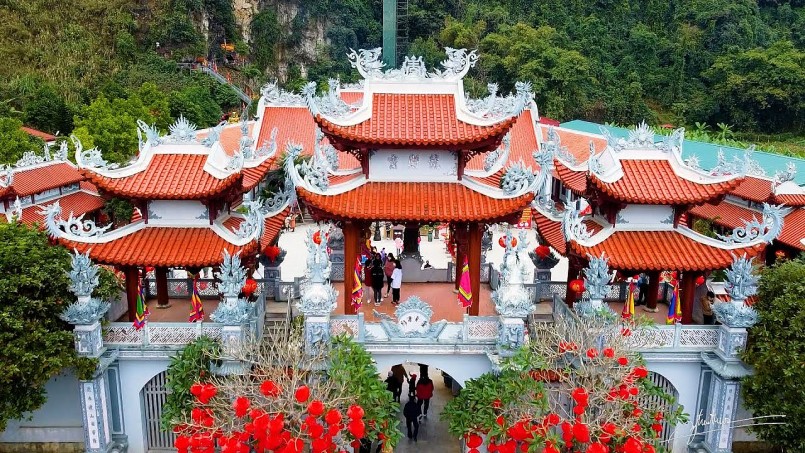Bong Lai Pagoda
Bồng Lai Pagoda is a well-known spiritual destination in Phú Thọ Province, admired for its peaceful landscape, traditional architecture, and sacred ambiance. Tucked away in a quiet, natural setting, this temple is not only a place of Buddhist worship but also a serene retreat for those seeking inner peace and spiritual reflection.
1. History and Background
Bồng Lai Pagoda has long been associated with the cultural and religious life of the local people. Though not widely documented in national historical records, it is believed to have been established many decades ago and has since become a familiar name in spiritual tourism in Phú Thọ.
The name "Bồng Lai" refers to a legendary place of harmony and immortals in Eastern mythology—suggesting that the pagoda was envisioned as a peaceful, heavenly sanctuary on earth. It has gradually gained popularity, especially during Buddhist holidays and springtime pilgrimages.
2. Architecture and Design
The architectural style of Bồng Lai Pagoda reflects the elegance and symbolism of Vietnamese Buddhism, with each element designed to inspire tranquility and reverence.
Key architectural features include:
-
Three-entrance Gate (Tam Quan): Marking the sacred boundary of the temple, this gate is decorated with traditional motifs and calligraphy.
-
Main Hall (Chánh điện): The heart of the pagoda, where statues of Shakyamuni Buddha, Quan Âm (Avalokiteshvara), and other bodhisattvas are respectfully enshrined.
-
Bell and Drum Towers: These structures are used during ceremonies to create a meditative soundscape.
-
Lotus Pond and Stone Pathways: Adding to the temple’s natural beauty and calming atmosphere.
-
Bonsai Gardens and Lantern Displays: Enhancing the aesthetic appeal, especially during festivals and full moon days.
The pagoda’s structure is both modest and meaningful, creating a harmonious blend with the surrounding countryside.
3. Spiritual and Cultural Significance
Bồng Lai Pagoda serves as a local spiritual center where Buddhists gather for:
-
Daily prayers and chanting sessions
-
Ceremonial events on significant Buddhist days like Vesak and Vu Lan
-
Pilgrimages during the Lunar New Year and spring festival season
-
Community events and charity programs, reflecting the Buddhist values of compassion and service
Though it may not be as prominent as larger temples in Việt Trì or other cities, Bồng Lai Pagoda holds deep emotional and spiritual value for the people of Phú Thọ.
4. Visiting Tips
-
Location: Likely situated in a rural commune or scenic area of Phú Thọ Province (exact location may vary; ask locals or check community tourism pages for directions)
-
Opening Hours: Typically open from early morning until late afternoon
-
Entrance Fee: Free of charge; donations are welcome
-
Dress Code: Modest attire is required—avoid short skirts, tank tops, or loud colors
-
Getting There: Best accessed by motorbike or car; local guides may help if the location is not marked clearly
-
Best Time to Visit: During early spring (around the Lunar New Year) or full moon days for a more lively experience
5. How to Enjoy Your Visit
-
Begin your visit by walking slowly through the temple gate, taking in the peaceful environment
-
Offer incense and silent prayers in the main hall
-
Explore the gardens and stone paths, which encourage meditation and mindfulness
-
If visiting during a festival, you may see monks performing rituals or locals preparing offerings
-
Spend a quiet moment near the pond or under the trees, reflecting or simply enjoying the calm
Conclusion
Bồng Lai Pagoda is a hidden gem in Phú Thọ Province—a place where nature, tradition, and spirituality meet. Whether you're a devout Buddhist, a cultural traveler, or simply someone in search of peace, this temple offers a moment of retreat from the noise of daily life.


